Longitudinal profiling reveals a persistent intestinal dysbiosis triggered by conventional anti-tuberculosis therapy
- PMID: 28683818
- PMCID: PMC5501520
- DOI: 10.1186/s40168-017-0286-2
Longitudinal profiling reveals a persistent intestinal dysbiosis triggered by conventional anti-tuberculosis therapy
Abstract
Background: Effective treatment of Mycobacterium tuberculosis (Mtb) infection requires at least 6 months of daily therapy with multiple orally administered antibiotics. Although this drug regimen is administered annually to millions worldwide, the impact of such intensive antimicrobial treatment on the host microbiome has never been formally investigated. Here, we characterized the longitudinal outcome of conventional isoniazid-rifampin-pyrazinamide (HRZ) TB drug administration on the diversity and composition of the intestinal microbiota in Mtb-infected mice by means of 16S rRNA sequencing. We also investigated the effects of each of the individual antibiotics alone and in different combinations.
Results: While inducing only a transient decrease in microbial diversity, HRZ treatment triggered a marked, immediate and reproducible alteration in community structure that persisted for the entire course of therapy and for at least 3 months following its cessation. Members of order Clostridiales were among the taxa that decreased in relative frequencies during treatment and family Porphyromonadaceae significantly increased post treatment. Experiments comparing monotherapy and different combination therapies identified rifampin as the major driver of the observed alterations induced by the HRZ cocktail but also revealed unexpected effects of isoniazid and pyrazinamide in certain drug pairings.
Conclusions: This report provides the first detailed analysis of the longitudinal changes in the intestinal microbiota due to anti-tuberculosis therapy. Importantly, many of the affected taxa have been previously shown in other systems to be associated with modifications in immunologic function. Together, our findings reveal that the antibiotics used in conventional TB treatment induce a distinct and long lasting dysbiosis. In addition, they establish a murine model for studying the potential impact of this dysbiosis on host resistance and physiology.
Keywords: 16S rRNA; Antibiotics; Dysbiosis; Microbiota; Tuberculosis.
Figures
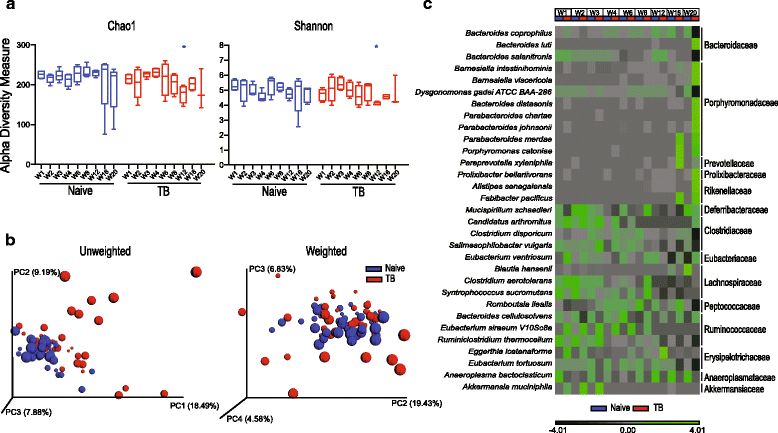
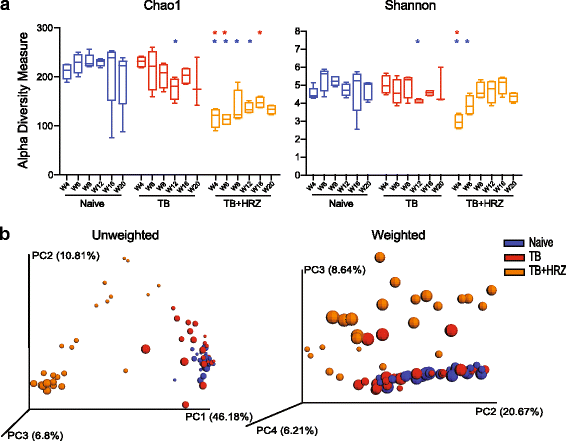
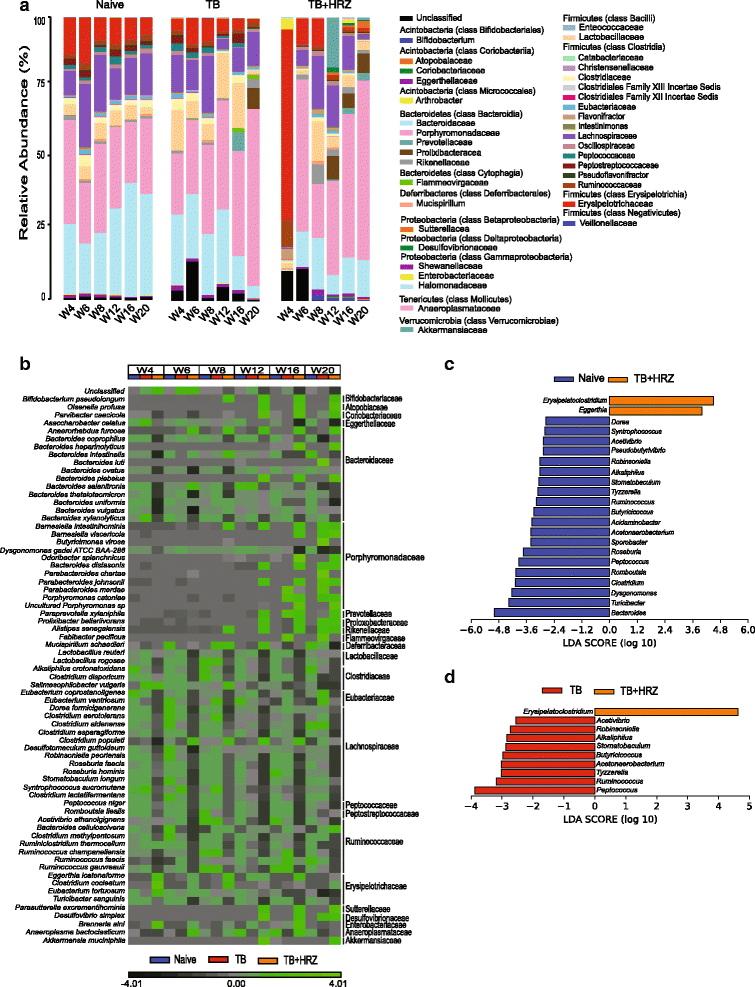
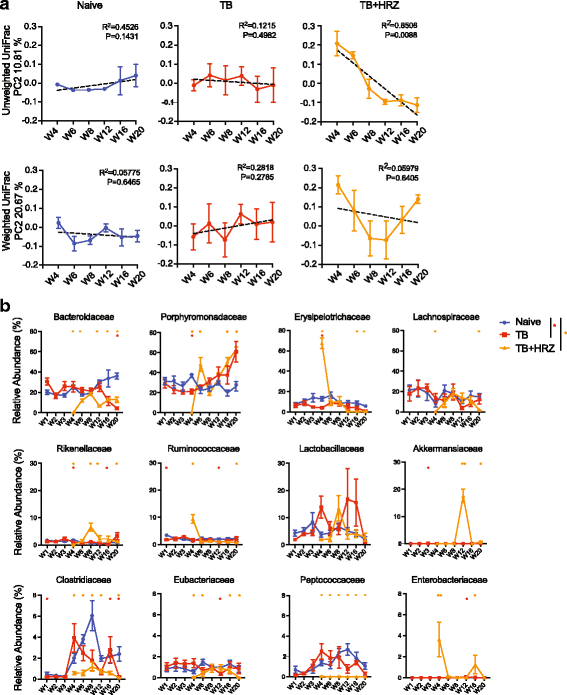
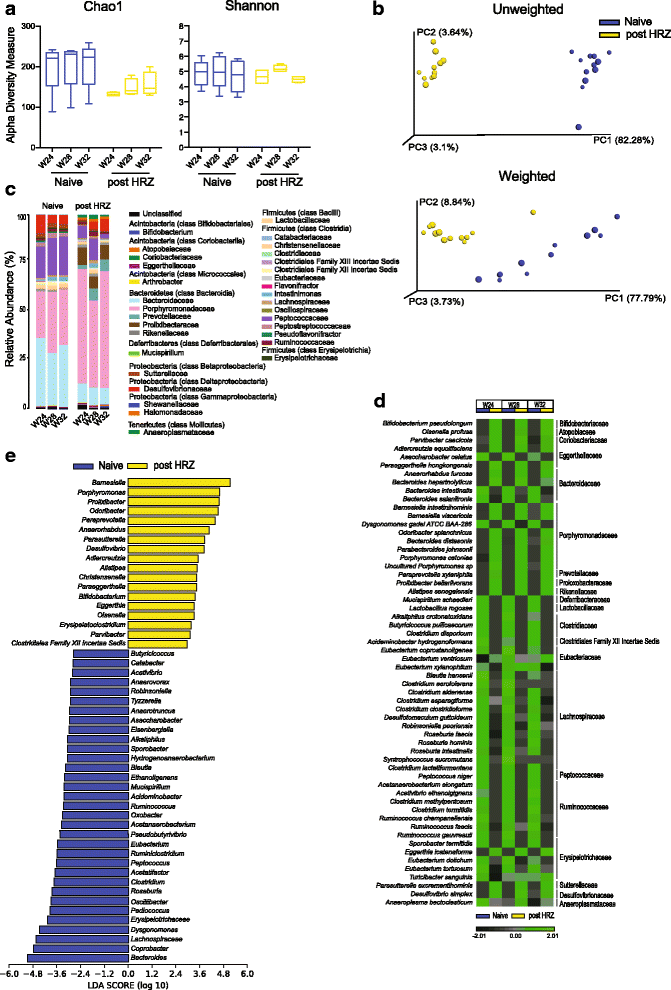
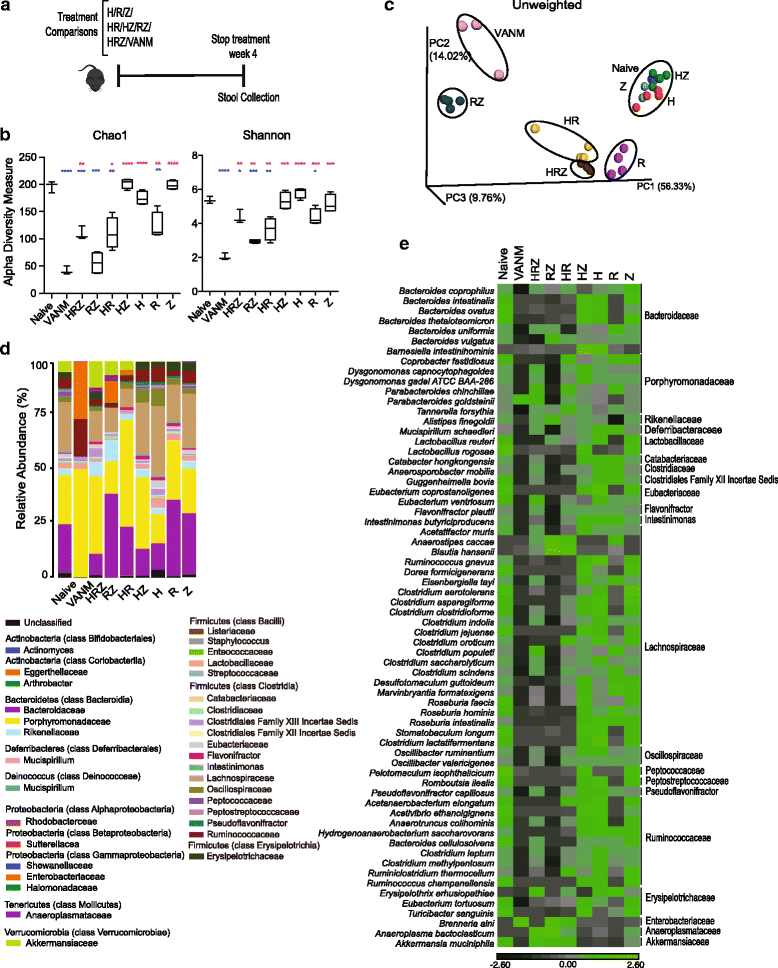
References
-
- WHO . Global tuberculosis report. 2016. Geneva: WHO; 2016.
-
- Brennan PJ, Young DB. Isoniazid. Tuberculosis (Edinb). 2008;88(2):112–116. - PubMed
-
- Brennan PJ, Young DB. Pyrazinamide. Tuberculosis (Edinb). 2008;88(2):141–144. - PubMed
-
- Brennan PJ, Young DB. Rifampin. Tuberculosis (Edinb). 2008;88(2):151–154. - PubMed
-
- Brennan PJ, Young DB. Ethambutol. Tuberculosis (Edinb). 2008;88(2):102–105. - PubMed
Publication types
MeSH terms
Substances
Grants and funding
LinkOut - more resources
Full Text Sources
Other Literature Sources

